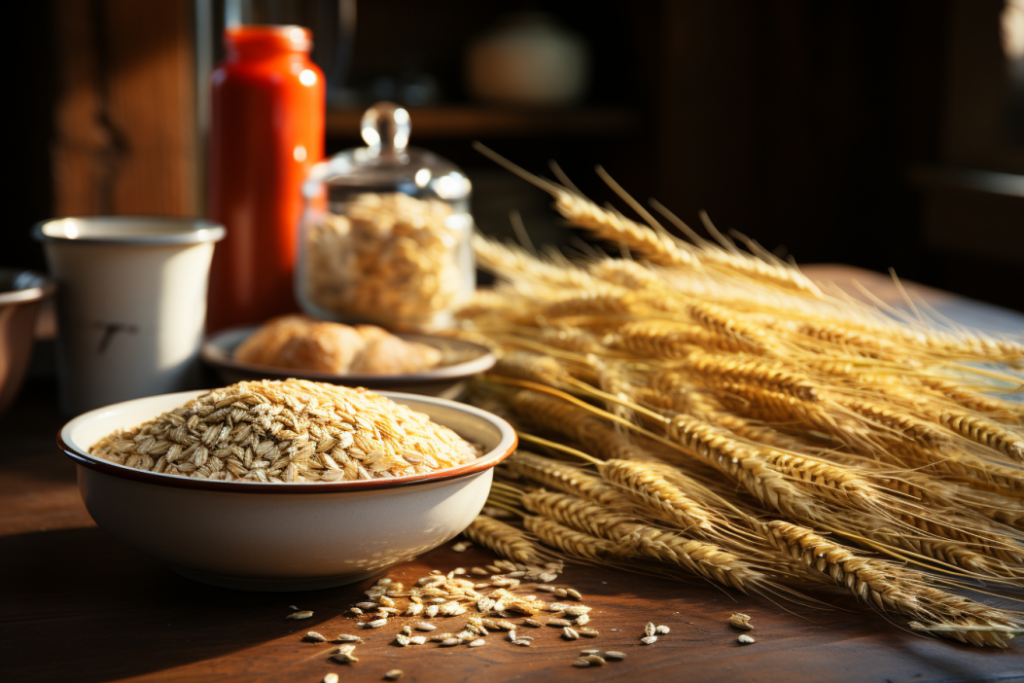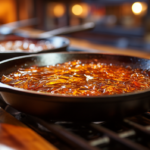Table of Contents
Are you tired of the same old baking routine? Want to add some excitement to your baked goods? Look no further than ancient grains! These grain varieties, such as spelt and kamut, have been used for centuries and are making a comeback in the baking world. Not only do they bring a unique flavor and texture to your recipes, but they also offer a range of health benefits. From bread to muffins, pancakes to waffles, this article will give you simple and delicious recipes that showcase these ancient grains. Get ready to impress your taste buds and your friends with your baking skills!
The Wonders of Ancient Grains: Why They Are Making a Comeback in Baking
Ancient grains such as spelt, kamut, einkorn, and emmer wheat have been gaining popularity among bakers and health enthusiasts alike in recent years. So why are they making a comeback in baking?
Nutritional Benefits
One of the main reasons ancient grains are becoming popular again is their nutritional value. These grains are typically higher in protein, vitamins, and minerals compared to modern wheat varieties. Spelt, for example, is rich in iron, magnesium, and fiber. Kamut is high in selenium, zinc, and protein. These nutritional benefits make ancient grains an attractive option for anyone looking to add more wholesome ingredients to their diet.
Unique Flavor and Texture
Aside from their nutritional benefits, ancient grains also offer a unique flavor and texture to baked goods. Spelt, for example, has a nutty flavor and a crumbly texture, making it perfect for bread and pastry. Kamut has a buttery flavor and a chewy texture, making it an excellent choice for pasta and baked goods. These unique flavors and textures can add a new dimension to your recipes and surprise your taste buds.
Sustainability
Another reason to choose ancient grains over modern wheat varieties is sustainability. Ancient grains have been grown for thousands of years using traditional methods, and they are typically more resilient to pests and diseases. Compared to modern wheat varieties, ancient grains require fewer pesticides, synthetic fertilizers, and water to grow. By choosing to bake with ancient grains, you are not only benefiting your health but also supporting sustainable farming practices.
Gluten Sensitivity
Lastly, ancient grains may be a good option for people with gluten sensitivity. While they contain gluten, some people find that ancient grains are easier to digest and cause fewer digestive issues than modern wheat varieties.
In summary, the popularity of ancient grains in baking is due to their nutritional benefits, unique flavor and texture, sustainability, and potential benefits for people with gluten sensitivity. Using spelt, kamut, einkorn, or emmer wheat can add a new dimension to your baked goods and support a more sustainable food system. So why not try incorporating them into your baking recipes?
Spelt: A Nutty and Nutritious Grain for All Your Baking Needs
If you are searching for a delicious and nutritious alternative to wheat flour, look no further than spelt. This ancient grain has been used in baking for centuries, and it’s easy to see why.
Nutritional Benefits
Spelt is a nutrient-dense grain that is packed with a wide variety of vitamins and minerals. It is an excellent source of:
- Protein: Spelt is rich in protein, which is essential for building and repairing tissues.
- Fiber: Spelt contains high levels of fiber, which can help you feel full and improve digestive health.
- Iron: This vital mineral helps carry oxygen throughout the body.
- Zinc: Spelt is high in zinc, which is important for a healthy immune system.
- Vitamin B: Spelt is rich in B vitamins, which are critical for energy production.
Unique Flavor Profile
One of the most significant advantages of spelt is its unique nutty flavor. This flavor can add a depth of character to baked goods that you can’t achieve with regular wheat flour. Additionally, spelt has a slightly sweet taste that complements a wide range of recipes.
Versatility in Baking
You can use spelt flour in a wide range of baked goods, including bread, muffins, pancakes, and waffles. Since spelt flour has a higher gluten content than most other ancient grains, it’s often used as a substitute for wheat flour.
Tips for Baking with Spelt
If you’re new to baking with spelt, you may want to consider the following tips:
- When using spelt flour in your recipe, it’s essential to use a bit more liquid than you would for wheat flour. This helps create a moist texture.
- Spelt flour is denser than wheat flour. So, be mindful of this when substituting wheat flour with spelt flour.
- Spelt flour absorbs moisture quickly. So, be sure to store it in an airtight container to prevent it from drying out.
In conclusion, spelt is an excellent alternative to wheat flour in your baked goods. With its unique and nutty flavor, nutritional benefits, and versatility in baking, it’s no wonder that spelt is making a comeback in the baking world.
Kamut: The King Tut of Ancient Grains and Its Versatility in Baked Goods
Move over, spelt – there’s a new ancient grain in town, and it’s taking the baking world by storm. Kamut, also known as khorasan wheat, has been around for thousands of years but is only now regaining popularity in modern kitchens. Here’s what you need to know about baking with kamut:
What is Kamut?
Kamut is a variety of wheat that has a larger kernel than modern wheat and a nuttier flavor. It’s also higher in protein and many essential nutrients, making it a popular choice for health-conscious bakers.
Why Choose Kamut for Baking?
There are plenty of reasons to love kamut when it comes to baking. Here are just a few:
- Taste: The nutty, buttery flavor of kamut adds a touch of sophistication to any recipe.
- Versatility: Kamut flour can be used in a variety of baked goods, from bread to cookies to cakes.
- Nutrition: As mentioned, kamut is a nutritional powerhouse and can be a great source of vitamins and minerals in your diet.
- Digestibility: Some people who are sensitive to modern wheat find that they can tolerate kamut better, making it a great alternative for those with gluten sensitivities.
How to Use Kamut in Baking
If you want to experiment with this ancient grain in your baking, try substituting some of the flour in your recipes with kamut flour. You can use it on its own or mix it with other flours to get the perfect texture and flavor for your baked goods. Some popular recipes to try with kamut include:
- Kamut bread
- Kamut cookies
- Kamut pizza crust
- Kamut pancakes
Don’t be afraid to branch out from the usual all-purpose flour in your baking recipes. Kamut is just one of many ancient grains that can add variety and nutrition to your baked goods. Try it out, and who knows – you might just find a new staple in your pantry.
Beyond Spelt and Kamut: Exploring Other Ancient Grains to Elevate Your Baking Game
Spelt and Kamut are two of the most popular ancient grains used in baking. However, there are many other grains to choose from when seeking a unique and nutritious baking experience.
1. Einkorn
Einkorn is known as the oldest wheat species. It has a buttery, nutty flavor and contains gluten, making it a great substitute for conventional wheat flour. Its high protein and fiber content also make it a healthy option for baking.
2. Teff
Teff, a grain native to Ethiopia, has a unique nutty and earthy flavor. It is gluten-free and packed with protein, calcium, and iron. It is perfect for gluten-free baking, like pancakes, waffles, and bread.
3. Farro
Farro is an ancient wheat variety with a nutty taste and chewy texture. It is packed with protein, fiber, and nutrients like vitamin B and iron. Farro flour is perfect for baking everything from bread to cookies
4. Barley
Barley is a hearty, versatile grain that can be used in both savory or sweet recipes. It has a nutty taste and chewy texture, making it perfect for baked goods like muffins, scones, and bread.
5. Buckwheat
Buckwheat is gluten-free and packed with nutrients like protein, fiber, and manganese. Its earthy flavor is perfect for pancakes, waffles, and crepes
Experimenting with these ancient grains can add variety and nutrients to your baked goods. Don’t be afraid to mix and match these unique grains to create completely original recipes. Happy baking!
Conclusion
Whether you’re looking to break out of a baking rut or simply explore new flavors and textures, baking with ancient grains is a delightful adventure. Spelt, kamut, and other ancient grains may have been around for thousands of years, but they are still making a comeback in the baking world for their unique taste and nutritional benefits. With the recipes and tips outlined in this article, you can easily incorporate these grains into your baking repertoire and take your culinary skills to the next level. Get ready to wow your taste buds and impress your friends with your newfound ancient grain expertise!









